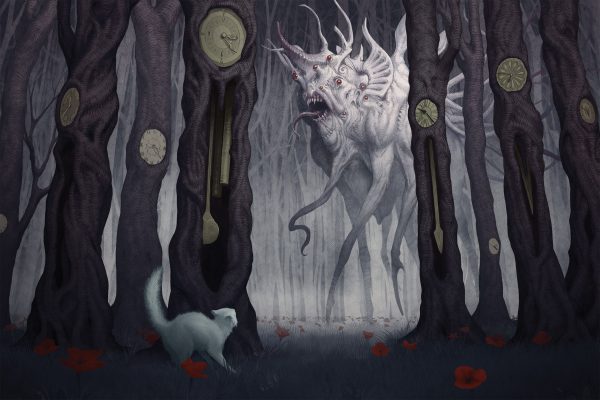When designing a roleplaying game (or setting), one of the first questions you ask yourself is, “What do characters do in this game?” You need to have a good answer for that.
For most games, the answer suggests the kind of adventures the group will have. In fact, when I am looking at a brand new game, if I can, I’ll look at an adventure for the game before I look at the game itself. Because adventures tell the story of the game. If you read Glacial Rift of the Frost Giant Jarl, you have a pretty good idea of what 1st Edition D&D is all about. Exploring dangerous places, fighting monsters, and getting treasure. If for no other reason, this is why I think that if you’re going to try a new game (and you should always try new games!) you should also read a published adventure for that game. It should serve as a fantastic example for what the game’s all about, and how you want to set things up for your own campaigns.
This issue became difficult with Invisible Sun, though. Because if there was anything I was sure of, it was that Invisible Sun characters don’t go on adventures. At least, not in the way that adventures are typically presented. They don’t go plumbing ancient ruins for treasure, and they don’t go on missions to save villages from orcs for a bag of gold. In fact—and I say this as the author of a lot of published adventures—adventures are kind of weird. In campaigns that I run, whether it’s Numenera, Call of Cthulhu, D&D, or anything else, the events of the game can rarely be categorized into discreet adventures. One story weaves into another, plotlines intersect and diverge, and so on.
But even then, the stories are usually fairly external to the characters. The characters are often reacting to things. And I knew that I didn’t want Invisible Sun to be that way. Invisible Sun is far more character focused. Last month, I talked about character creation, and in this game, character creation is an ongoing process. What I mean by that is that characters continue to grow and change in significant ways based on what they experience. Consider your favorite fictional character. Whether it’s Michael Corleone, Samwise Gamgee, or Leia Organa, they didn’t end up the same as they started. Their stories changed them. That’s what I want for Invisible Sun characters. That’s why players develop a character arc (and eventually multiple such arcs) for their characters right out of the gate.
I wanted the game to be character driven as well. I didn’t want the PCs to be merely reactive. “There’s trouble down at the old mill,” or “Take this message to the town on the other side of the dark swamp for me” is not how I wanted the stories to start. Character arcs figured into this as well. Because if a character has the goal of learning a particular secret, that desire (and its associated arc) will drive play. No “adventure hook” needed. PCs come with their own “hooks.”
The rules describe how players and GMs work together to choose and build a story arc. An arc can be practically anything—defeating an old enemy, discovering something lost, building something new, learning about something.
This turns the table on the traditional RPG setup. In effect, the players design the story and the GM reacts (often with unexpected twists and turns). The GM isn’t making up a story for the group. The story emerges from the proactivity and initiative of the players. This emergent quality is reinforced because each character has an arc (or two). If Riven wants to find the demon that killed his friend, and Fiona wants to rise in the ranks of the Order of Goetica, then Fiona works in the records rooms of the order to earn some good will, and at the same time looks for any records about the location of Riven’s demon. The interaction of the goals of the character arcs creates the storyline step by step.
This means the GM has both more and less onus on them. Really, it just makes the GM’s job different. Less preparation with plot and more preparation with characters and setting. Because when the PCs’ story takes them to the records rooms of the Order of Goetica, they ought to meet someone interesting. So the GM has prepared a handful of interesting NPCs that the PCs will meet at some point, but the GM doesn’t necessarily know where. The NPC might very well have something to add to the ongoing storyline, or perhaps something to trigger a new storyline, but only because it triggers something of interest to the PCs or relates to their goals, not because the GM is trying to entice the group into a predetermined plot of their devising.
The plot will take care of itself.
